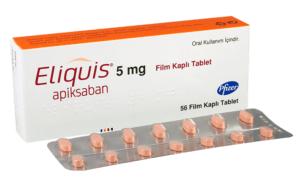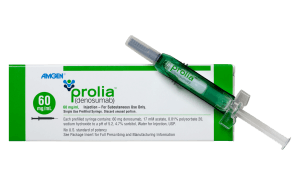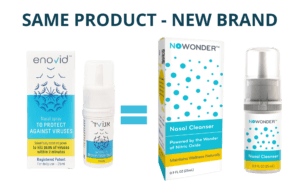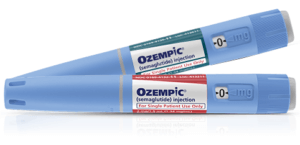 On February 2nd, 2024, the venerable New York Times published an article titled “Six Reasons Why It’s So Hard to Get Your Weight-Loss Drugs”. There were few surprises for us in what the NYT wrote because we have been hearing many of the same complaints from new customers who have been struggling to fill their orders from sources in the U.S.
On February 2nd, 2024, the venerable New York Times published an article titled “Six Reasons Why It’s So Hard to Get Your Weight-Loss Drugs”. There were few surprises for us in what the NYT wrote because we have been hearing many of the same complaints from new customers who have been struggling to fill their orders from sources in the U.S.
We can summarize the main points that are highlighted in the NYT article and offer a few extra insights into how the market got into this difficulty. More importantly, we can offer specific ways to get your weight-loss drugs rather than simply repeating what people already know, thanks to the particular approach we have taken from the very start of the boom in the use of weight-loss medications back in 2021.
Before getting into the details, it’s worthwhile to summarize the main elements that make up the whole issue of where all of this unfulfilled demand is coming from and who is tasked with correcting the problem.
Weight loss has become a significant healthcare target because of the ballooning obesity rates of people in the US. In some circles, it’s being called an epidemic. Overweight and obese individuals now make up nearly half of the total adult population. Despite many campaigns to encourage better eating habits, more exercise, and healthier lifestyles, the growth in the number of people classified as overweight (BMI between 25 and 30) or obese (BMI over 30) does not seem to be slowing down. For a more detailed look into what has been happening, please read our blog, What We Know About the Obesity Epidemic.
Then, along came Ozempic, the first of the GLP-1 diabetes treatments, followed by its successors. As we wrote in our blog, Riding the Ozempic weight-loss tsunami, Ozempic is a new form of treatment for type 2 diabetes that uses semaglutide. It is a glucagon-like peptide 1 (GLP-1) receptor agonist. GLP-1 is a hormone produced in the gut. It is released in response to food, prompting the release of insulin as well as a reduction in appetite. In the case of people with type 2 diabetes, it acts to slow digestion and stimulates increased production of natural insulin. People taking weekly injections of Ozempic were reported to be losing weight, mainly due to lower levels of hunger, as food remained in the stomach for longer. The New England Journal of Medicine reported that “semaglutide once weekly plus lifestyle intervention was associated with sustained, clinically relevant reduction in body weight.”
Following Ozempic, variants on GLP-1, such as Mounjaro, were released for diabetes treatment and were found to have similar weight-loss effects. This led to stronger forms of both of these that focused on the weight-loss aspect of GLP-1 rather than as a treatment for diabetes. Wegovy, based on semaglutide (Ozempic’s generic), and Zepbound, based on tirzepatide (Mounjaro’s generic), are prescribed purely as weight-loss medications. You can find more information about all of these variations of diabetes and weight-loss drugs in our blog “What’s the difference between Ozempic and Mounjaro?”
Having given some context, let’s get down to dealing with the main problems they raised and how we can help to solve them for you.
Demand for weight-loss medication is very high
There has been a flood of information (some of it less than truthful) on social media that touted the wonder effects of GLP-1 meds as game-changers for people wanting to lose weight effortlessly and instantaneously. Both of these promises are simply unbelievable. The studies that produced the statistics about how well GLP-1 works in weight loss ran for between two to three years, and all the participants had to stick to controlled diets and do moderate exercise each day. GLP-1 does work, but it’s not a miracle cure!
Over 50 million adult Americans are classified as overweight or obese. Apart from the health consequences of this, there’s all the social stigma that this condition brings with it. So, it’s understandable that when people believed that there’s a simple way of shedding all those excess pounds, this created a stampede of demand. Not forgetting that there is already an established demand for these drugs as life-changing medications for people with type 2 diabetes.
Bottom line: demand skyrocketed way beyond what even the most optimistic usage plans could have projected, and the shelves ran dry.
Supply of the weight-loss medicines is limited
The main brands that have gained so much interest are Ozempic/Wegovy from Novo Nordisk and its rival Mounjaro/Zepbound from Eli Lilly and Company. It’s too early in the life of ground-breaking treatments like GLP-1 for there to be any generic forms of the medications on the market, so essentially, everything has come from one of these two companies.
Initial sales projections were based on the demand from type 2 diabetic patients. There were very good statistics, gathered over many years, of the levels of diabetes in the general population, so the companies were able to make pretty accurate estimates of their likely sales, and they built their production facilities to match. In the end, they were overwhelmed by the later demand for their medicines as weight loss drugs – and it’s not a simple matter to increase levels of output at short notice. This in a nutshell explains why you can’t get your weight-loss drugs in the same way other drugs come straight off the pharmacy’s shelves into your hands.
Building production facilities for such specialized drugs is a complex, resource-intensive process that has been further complicated by the global supply chain disruptions following the COVID-19 pandemic. It takes many years, enormous resources, and involves meticulous planning and design. Factories must adhere to the stringent FDA regulatory standards. Procuring specialized equipment and a workforce skilled enough to operate in a highly specialized environment, is another major challenge. So, it’s not simply a matter for a company to issue orders for procuring all the equipment that they would need to build these factories and get them delivered when and where needed. Schedule overruns have become the norm in constructing pharmaceutical production facilities, and the inability of the two pharmaceutical companies to meet demand was a natural consequence. It will probably take many years before there’s enough output to meet global demand.
Getting insurance to pay is becoming harder
In the beginning, most insurance companies did pay at least part of the cost for GLP-1 type medications for people who were diabetic. As a matter of policy for most insurers, weight-loss medication is not covered, and patients have to pay the total cost. As the demand switched over to GLP-1 for weight loss, many insurance companies became concerned by the swelling cost from patients who didn’t have diabetes. Given the choice of paying for all Ozempic (which was economically unsustainable unless the insurers increased their rates) or cutting Ozempic out of the covered drugs for all members, which would have been difficult to justify since it treats justifiable conditions, insurers faced a dilemma. The solution has been to restrict the cover they offer by tightening the rules for patients to get prescriptions (see the next point.)
Getting doctors to issue a prescription is becoming more difficult
The way the decision is reached by the insurer whether or not to cover all or part of the cost varies from insurer to insurer, between states for the same insurer, and from plan to plan. In some cases, doctors are being put on the firing line, having to fully validate their issue of a prescription for Ozempic or Mounjaro to treat a diabetic patient. It may even require that they change the treatment back to older methods and stop issuing GLP-1 unless the patient is prepared to pay full price themselves! In other instances, the patient has to get prior authorization from the insurance company before a doctor can issue the prescription, which is a bureaucratic hurdle that can take weeks or even months to clear. For diabetes patients, this is a very serious situation since proper treatment of their condition is extremely important.
Faced with these problems, more and more doctors are having to get their patients to fully understand that unless they can afford the much more expensive GLP-1 medicines, they will have to issue prescriptions for the older and, in some cases, less effective meds.
Weight-loss drugs are expensive
Currently, the average retail price for Ozempic in the US is around $1000 for the one-month (four-dose) pen. Wegovy comes in at around $1800. Mounjaro typically costs around $1250 for the same dosage and Zepbound has come onto the market at a starting price of $1100, but there’s no guarantee it will stay cheaper than its main competitor. So there’s no doubt that without insurance to cover a substantial part of the cost, people need to have deep pockets to become sustained users of both diabetes and weight-loss GLP-1 medicines.
What we can do to help
Supply
Currently, we offer two solutions for people looking to acquire diabetes and weight-loss medicines. Thanks to our location outside of the US, we can offer a stable source of the main form of Ozempic. Right now, we can supply the drug monthly, and hopefully, in the near future as supply shortages balance out, we will be able to let you bulk-order for two or three months at a time, just as we do for all our other products.
While we don’t yet sell Wegovy, we do sell a compounded form of Semaglutide, (the generic name of the active GLP-1 molecule inside Ozempic). This compounded form can be tailored to your specific needs.
Price
Like everything we sell, we have the advantage of not being locked into the US retail market pricing. In the case of Ozempic, we are able to provide it at roughly half the retail US prices. You will save $5000 to $6000 annually when you buy Ozempic from IsraelPharm. Compounded Semaglutide comes at an even greater discount, generally around 80% off the equivalents.
Prescription
In our latest facility, we have set up the RxFor.me telemedicine website that connects patients to online doctors in the US for prescriptions in several categories, including weight loss. If you are experiencing difficulties getting a script from your own doctor, a simple online consultation can get your needs fulfilled and the medicines on their way to you,in a simple, safe and straightforward process.
















